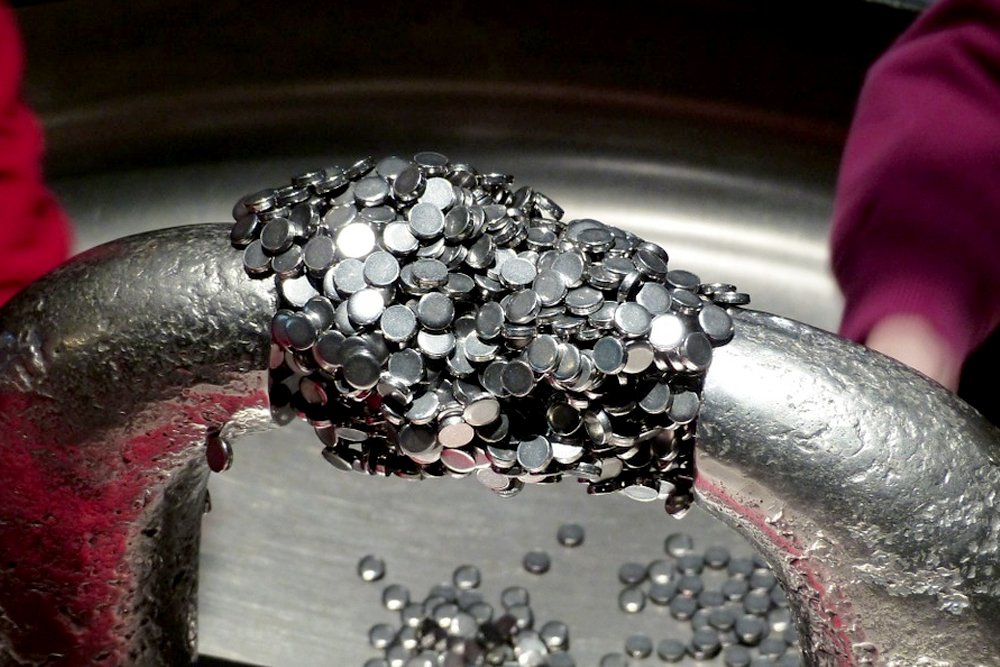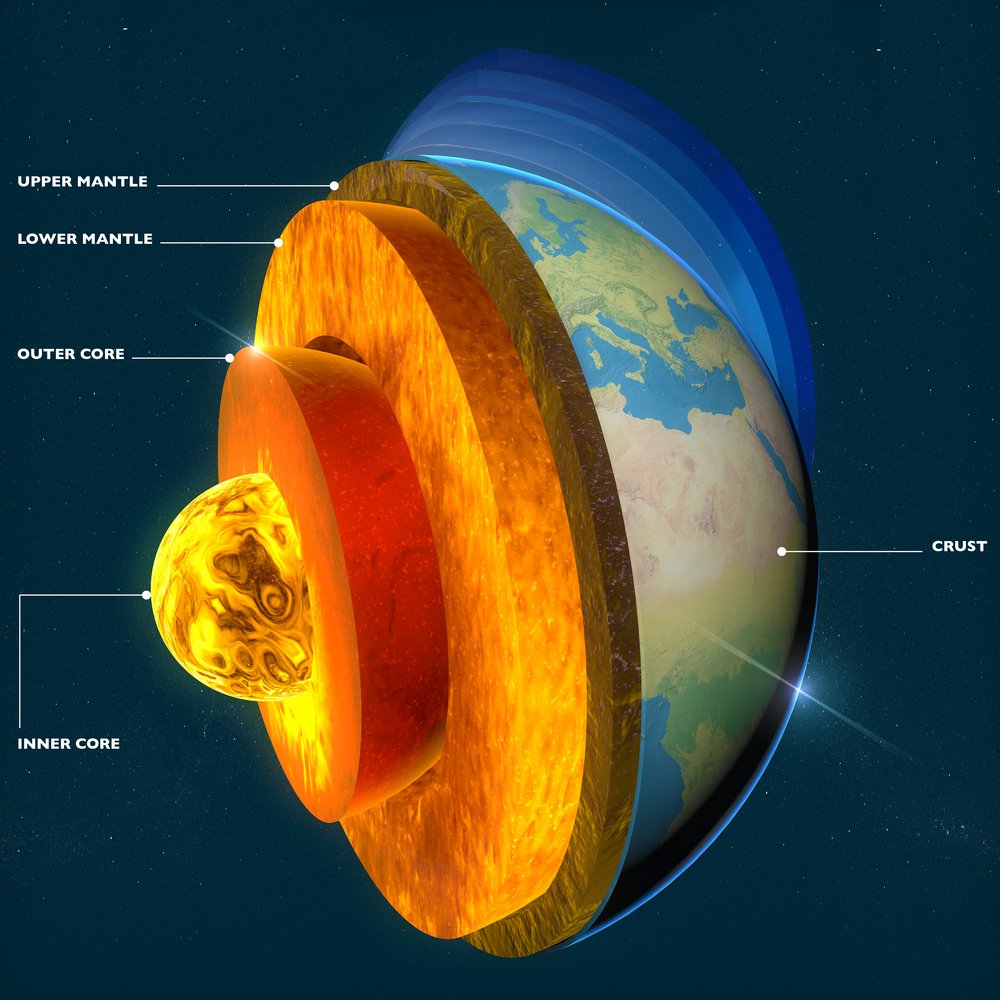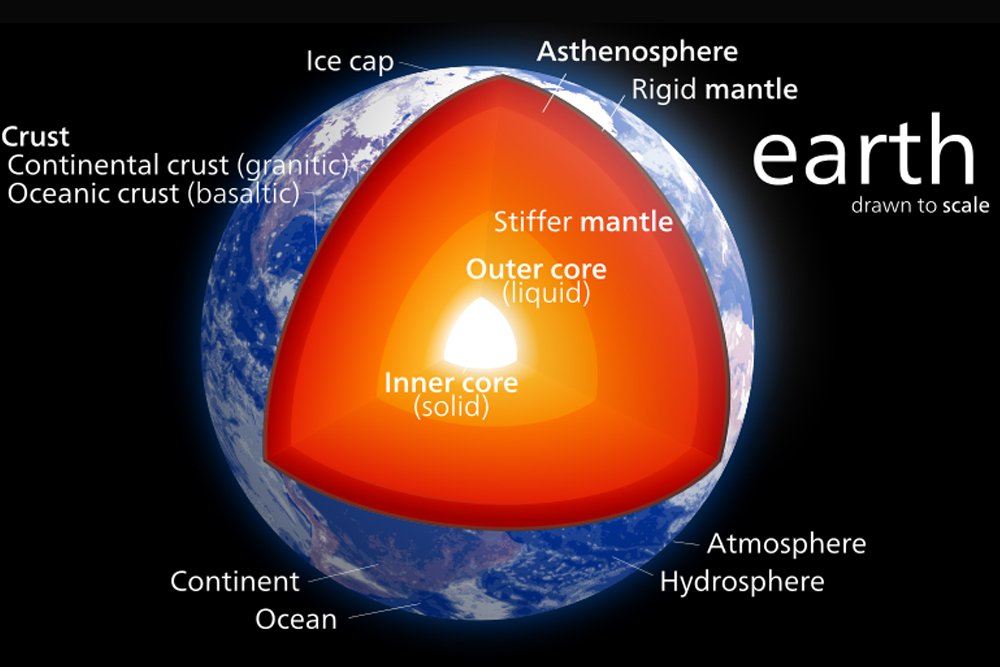Table of Contents (click to expand)
The Earth’s core is magnetic because it has a molten outer core that is in constant motion. The motion of the molten outer core produces an electric current which then produces a magnetic field.
Iron loses its magnetism when it’s heated to a few hundred degrees, yet Earth’s core – which produces a strong enough magnetic field to hold the planet together – is made of iron that’s so hot it is in a liquid state!
Why then, does the molten iron in Earth’s core produce a magnetic field?
Let’s start right from the bottom of this entire mystery.
Ferromagnetic Materials
Ferromagnetic materials are those that are strongly magnetized in an external magnetic field, and retain their magnetic moment even after the magnetic field is removed. Iron is a good example of a ferromagnetic material.

In order to explain the ferromagnetism of iron to you in simple terms, I’d say that iron is made of tiny ‘things’ (atomic moments, to be precise), atoms that act like tiny magnets, as all of them have north and south poles (like regular magnets).
When you hold up a magnet near an iron object, these tiny magnets present ‘inside’ the object align themselves or line up. This is what makes that object magnetic, and any object that behaves like this in the presence of an external magnetic field is called a ferromagnetic material.

However, when you heat a ferromagnetic material, like iron, things start to change.
Also Read: Why Are Some Materials Magnetic? Is Aluminum Magnetic?
What Happens When You Heat A Ferromagnetic Material?
When you heat iron, what you essentially do is supply additional thermal energy to it. This makes the tiny magnets in iron become promoted to high-energy states, pointing in the opposite direction with respect to their neighbors. This means that they are less aligned than before, so their ‘combined’ magnetism reduces. This goes on if you continue to heat iron until a point is reached beyond which iron loses its ferromagnetic properties and ceases to be a ferromagnet.
Iron stops being ferromagnetic at 1043 K (around 770 degrees Celsius/1417 Fahrenheit).
This particular temperature, i.e., the temperature at which a certain material loses its permanent magnetic properties is known as the Curie temperature. Its value is different for different materials.

So, it’s pretty evident that iron ceases to be a ferromagnetic material beyond 770 degrees Celsius. However, we also know that Earth’s core consists of molten iron, which is so incredibly hot (nearly 6000 degrees Celsius) that it makes the core as hot as the surface of the sun itself! Not only that, but the molten iron core produces a very strong magnetic field, something that makes Earth a habitable planet.
But isn’t that contradictory in itself? If iron loses its ferromagnetic properties and ceases to be a magnet at a (relatively) paltry temperature of 770 degrees Celsius, then how does Earth’s core, which is primarily made of iron, produce such a strong magnetic field?
Also Read: Do Magnets Lose Their Magnetism Over Time?
How Does Earth’s Core Produce A Magnetic Field?
Scientists and researchers have put forth a number of hypotheses in a bid to explain how Earth’s magnetic field is generated, but the only one that is considered plausible (at the time of writing this article) is the one that claims that the core behaves as a dynamo to produce a self-sustaining magnetic field. This is also known as the dynamo theory.
A dynamo is a device that converts mechanical energy into electrical energy. If you know the physical conditions of Earth’s core, then you would be able to understand the dynamo theory in no time.

Earth’s core has two segments: the inner and outer core. The outer core is so hot that it exists in a liquid state, but the inner core is solid, due to the extremely high pressure conditions (Source). Also, the outer core is constantly moving, due to Earth’s rotation and convection.
Now, fluid motion in the outer core moves molten iron (i.e., a conducting material) across an already existing, weak magnetic field. This process generates an electric current (due to magnetic induction). This electric current, then, generates a magnetic field that interacts with the fluid motion to produce a secondary magnetic field.
The secondary magnetic field reinforces the initial magnetic field and the process becomes self-sustaining. Unless the fluid motion in the outer core stops, the core will keep producing a magnetic field. This is exactly the premise of the 2003 science fiction movie The Core.
To put it all in simple words, molten iron present in the core doesn’t produce a magnetic field directly; rather, it produces an electric current, which in turn produces an electromagnetic effect, which ultimately produces the strong magnetic field of the Earth’s core.
Also Read: What Causes Earth’s Magnetic Field?
How well do you understand the article above!

References (click to expand)
- Dynamo Effect. The University of Oregon
- Geodynamo - Earth and Planetary Science. The University of California, Santa Cruz
- Generation of the Earth's magnetic field. Natural Resources Canada
- Heating Magnet | Physics Van | UIUC. The University of Illinois Urbana-Champaign
- Curie Point: Magnetism & Physics Science Activity. The Exploratorium
